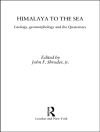In 1943, as part of the Manhattan Project, the Hanford Nuclear Reservation was established with the mission to produce plutonium for nuclear weapons. During 45 years of operations, the Hanford Site produced about 67 metric tonnes of plutoniumapproximately two-thirds of the nation’s stockpile. Production processes generated radioactive and other hazardous wastes and resulted in airborne, surface, subsurface, and groundwater contamination. Presently, 177 underground tanks contain collectively about 210 million liters (about 56 million gallons) of waste. The chemically complex and diverse waste is difficult to manage and dispose of safely.Section 3134 of the National Defense Authorization Act for Fiscal Year 2017 calls for a Federally Funded Research and Development Center (FFRDC) to conduct an analysis of approaches for treating the portion of low-activity waste (LAW) at the Hanford Nuclear Reservation intended for supplemental treatment. The second of four, this report reviews the results of the assessments, including the formulation and presentation of conclusions and the characterization and treatment of uncertainties.
Committee on Supplemental Treatment of Low-Activity Waste at the Hanford Nuclear Reservation & Division on Earth and Life Studies
Review of the Draft Analysis of Supplemental Treatment Approaches of Low-Activity Waste at the Hanford Nuclear Reservation [PDF ebook]
Review #2
Review of the Draft Analysis of Supplemental Treatment Approaches of Low-Activity Waste at the Hanford Nuclear Reservation [PDF ebook]
Review #2
ซื้อ eBook เล่มนี้และรับฟรีอีก 1 เล่ม!
ภาษา อังกฤษ ● รูป PDF ● หน้า 74 ● ISBN 9780309483520 ● สำนักพิมพ์ National Academies Press ● การตีพิมพ์ 2018 ● ที่สามารถดาวน์โหลดได้ 3 ครั้ง ● เงินตรา EUR ● ID 7150034 ● ป้องกันการคัดลอก Adobe DRM
ต้องใช้เครื่องอ่านหนังสืออิเล็กทรอนิกส์ที่มีความสามารถ DRM












